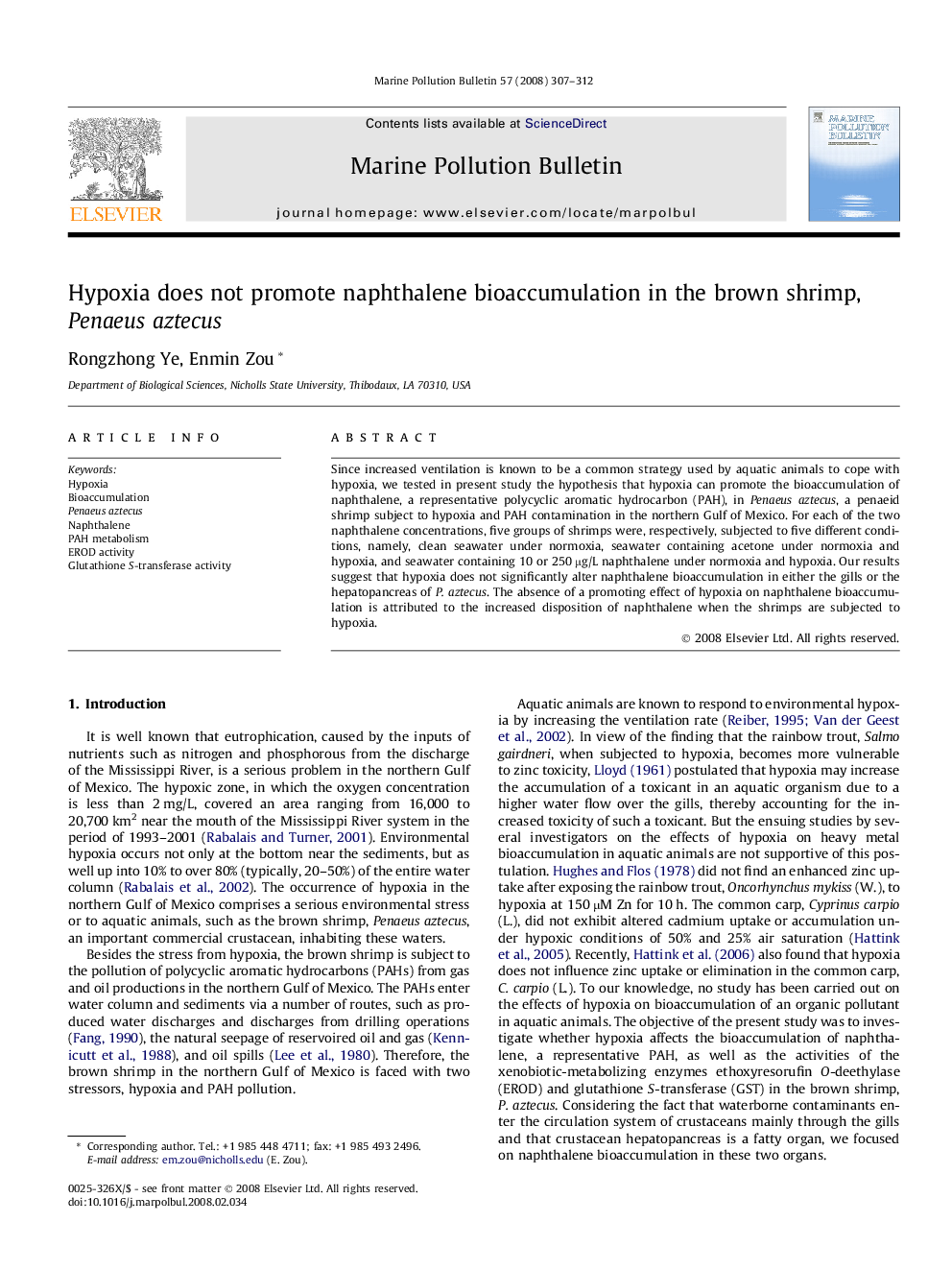| Article ID | Journal | Published Year | Pages | File Type |
|---|---|---|---|---|
| 4477041 | Marine Pollution Bulletin | 2008 | 6 Pages |
Since increased ventilation is known to be a common strategy used by aquatic animals to cope with hypoxia, we tested in present study the hypothesis that hypoxia can promote the bioaccumulation of naphthalene, a representative polycyclic aromatic hydrocarbon (PAH), in Penaeus aztecus, a penaeid shrimp subject to hypoxia and PAH contamination in the northern Gulf of Mexico. For each of the two naphthalene concentrations, five groups of shrimps were, respectively, subjected to five different conditions, namely, clean seawater under normoxia, seawater containing acetone under normoxia and hypoxia, and seawater containing 10 or 250 μg/L naphthalene under normoxia and hypoxia. Our results suggest that hypoxia does not significantly alter naphthalene bioaccumulation in either the gills or the hepatopancreas of P. aztecus. The absence of a promoting effect of hypoxia on naphthalene bioaccumulation is attributed to the increased disposition of naphthalene when the shrimps are subjected to hypoxia.
